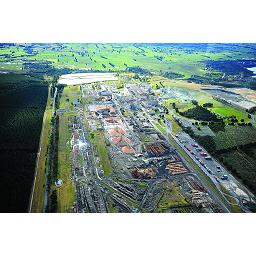Heidi Kraak
A Latrobe Valley Field Naturalists’ group member has questioned the planning minister’s decision not to require an Environmental Effects Statement for Australian Paper’s proposed energy from waste project.
An EES is typically prepared by the proponent to assess the potential environmental impacts of a proposed development and enable statutory decision makers to determine whether a project with potentially significant environmental impacts should proceed.
Planning Minister Richard Wynne decided earlier in the year that an EES would not be required for the energy from waste proposal, stating a works approval would be adequate to assess any associated environmental impacts.
However, LVFN member John Poppins addressed an EPA community meeting about the project and suggested an EES should be required of Australian Paper.
Mr Poppin said there would a “wider footprint” of the energy from waste project beyond the mill site.
“In isolation I think it is an excellent proposal, but it leads to a very big investment … and really forces the need for a grip on more forest feedstock for a long period of time into the future,” he said.
“It is changing the nature of Victoria over the long term.
“We really should be looking at [this proposal] holistically … the process and convention of environmental effects statements [are] set up to look at things holistically.”
Mr Poppins said there was pressure on young forests with substantial losses to fire and diminishing growth rates, resulting in there being “little old growth” and “major problems supplying the sawlog and furniture industry”.
“The extent of taxpayer and environmental subsidies to the mill needs to be fully understood and factored into the approval for the major investment in the extension of its lifetime,” he said.
“If the causes and future total costs of impending timber supply crisis are not holistically examined the wisdom of investing in this particular energy from waste proposal may be doubtful.
“Options requiring less transport may well be more viable for the term of the investment.”
A government spokesperson said the potential impacts of the project were “unlikely to be significant enough to trigger an EES process”.
“All impacts will be comprehensively assessed and regulated through existing statutory processes under the Environment Protect Act,” the spokesperson said.
For more information about the EPA works approval process, visit epa.vic.gov.au/about-us/news-centre/news-and-updates/news/2018/may/31/epa-considers-australian-paper-energy-from-waste-application.











